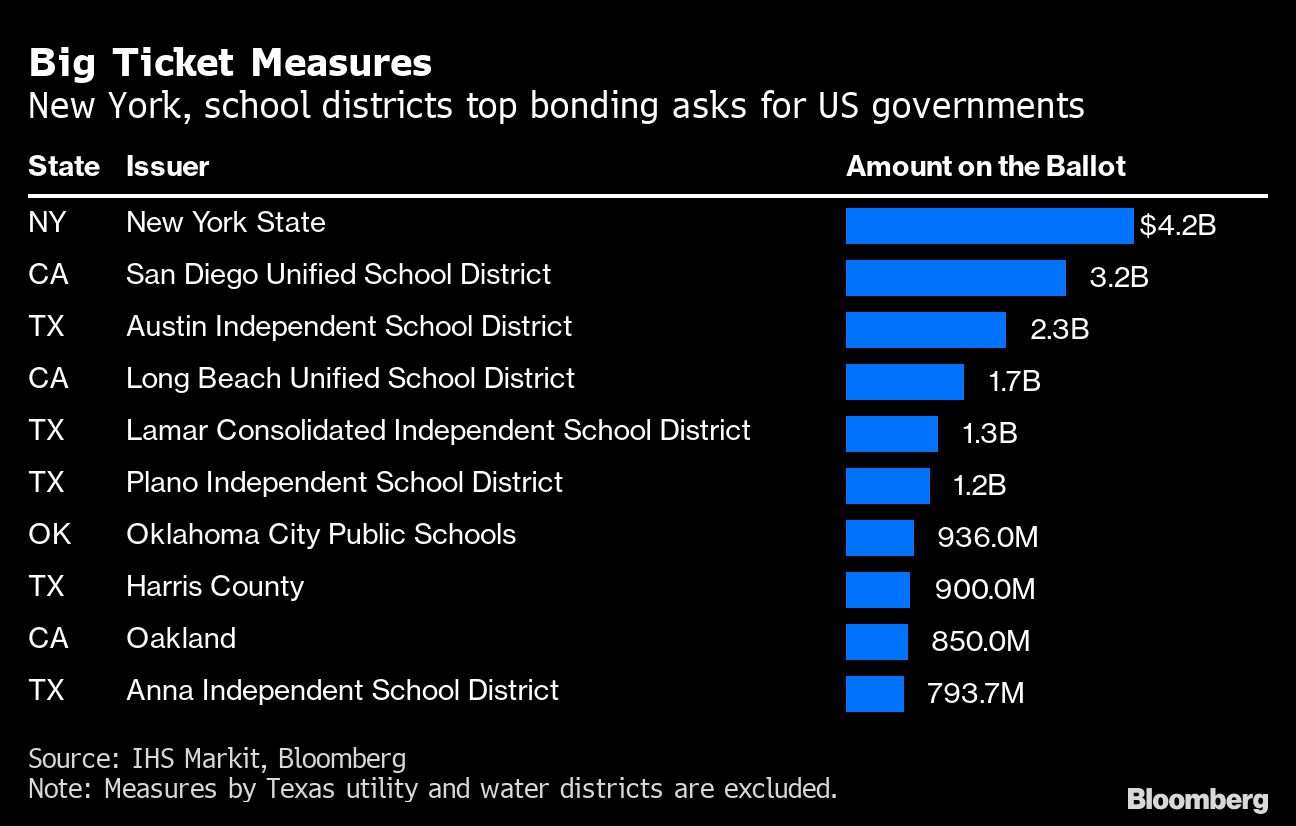Voters on Tuesday will weigh at least $66 billion of bond measures put forth by states and municipalities across the US that seek to finance projects like new schools and climate resiliency efforts.
The proposed borrowing is more than double the $27 billion on ballots at this time last year and among the highest volume of bonds up for a vote since at least 2009, according to a Bloomberg analysis of a preliminary tally of bond measures compiled by IHS Markit. The total excludes referendums by Texas’s utility and water districts.

The increase comes as states and cities have been collecting better than expected revenue in the last fiscal year, shoring up the budgets after a period of financial uncertainty at the onset of the coronavirus pandemic. New York, for example, was supposed to ask voters to approve $3 billion of environmental bonds in 2020 but took the measure off the ballot after the pandemic clouded the state’s fiscal picture. That referendum was subsequently upsized and placed on this year’s ballot.
Texas, California and New York are driving the surge in proposed issuance. Combined, the three states, which were the biggest borrowers in the municipal-bond market in 2021, are seeking voter approval of roughly $40 billion of bonds.
Bonding plans typically take local officials months to prepare so the measures likely reflect borrowing plans conceived when interest rates were lower and economic forecasts were rosier. Odds now favor the US economy slipping into a recession within the next year.
“Outlooks were much stronger this time last year, six or nine months ago, compared to today, and if anything, they are going to continue to deteriorate,” said Tom Kozlik, head of municipal research and analytics at Hilltop Securities Inc. He said that voters’ worries about a downturn may hinder bond approvals.
“It wouldn’t surprise me if the passage rate is lower because of the economic circumstances,” Kozlik said in an interview.
The jump in borrowing proposals comes as yields on municipal bonds near their highest levels in at least a decade, making it more expensive for governments to sell debt. Those higher costs have caused states and localities to be wary of tapping the capital markets. Long-term debt sales are down about 17% in 2022, compared to the same period a year ago, according to data compiled by Bloomberg.








